Anhui Feichun Special Cable Co.,Ltd Li.wang@feichuncables.com
Exploring the World of Underground Mining Techniques: A Deep Dive into South Africa's Mining Excellence
Discover underground mining techniques used in South Africa's mining industry. Learn about shaft mining, room and pillar methods, equipment, safety challenges, and future innovations in underground mining operations.
Li.wang@Feichun Cable
7/11/202515 min read

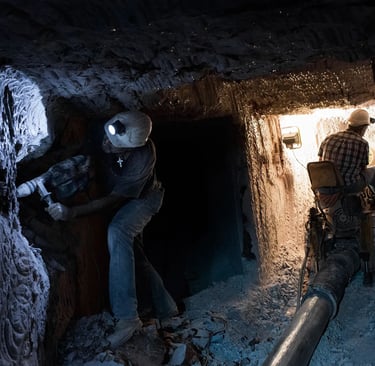
Deep beneath the surface of South Africa's mineral-rich landscape lies a complex network of underground mining operations that have shaped the nation's economy for over a century. From the gold mines of the Witwatersrand to the platinum deposits of the Bushveld Complex, underground mining techniques have enabled South Africa to become one of the world's leading mineral producers. As surface deposits become increasingly scarce and environmental regulations tighten, understanding these sophisticated underground mining methods becomes crucial for both industry professionals and the general public.
Underground mining represents a fascinating blend of engineering prowess, technological innovation, and human expertise. Unlike the visible scars left by open-pit operations, underground mining operations work silently beneath our feet, extracting valuable minerals whilst preserving the surface environment. This comprehensive exploration examines the various underground mining techniques employed across South Africa's mining sector, from traditional methods refined over decades to cutting-edge technologies that promise to revolutionise the industry.
What is Underground Mining?
Underground mining refers to the extraction of minerals and ores from deposits located deep below the earth's surface, typically accessed through vertical shafts, horizontal tunnels, or inclined ramps. This method becomes necessary when mineral deposits are located too deep for economical surface mining, or when surface mining would cause unacceptable environmental damage or conflict with other land uses.
The fundamental purpose of underground mining is to access valuable mineral resources that would otherwise remain untapped. In South Africa, this technique has been instrumental in exploiting deep gold reefs, platinum group metals, diamonds, and coal deposits that lie hundreds or even thousands of metres below ground level. The Mponeng Gold Mine, operated by AngloGold Ashanti, exemplifies the extreme depths achievable through underground mining, with operations extending nearly 4,000 metres below surface – making it one of the world's deepest mines.
Underground mining differs significantly from surface mining methods such as open-pit mining or strip mining. Whilst surface mining removes overburden to expose ore bodies, underground mining creates minimal surface disturbance by accessing deposits through carefully planned underground workings. This approach requires sophisticated ventilation systems, complex haulage networks, and extensive safety protocols to ensure worker safety in confined underground environments.
The process typically begins with geological surveys and exploratory drilling to determine the size, grade, and characteristics of the ore body. Once feasibility is established, access infrastructure is developed, including shafts, decline ramps, and horizontal tunnels. The mining operation then proceeds systematically, following the ore body whilst maintaining structural integrity and ensuring adequate ventilation throughout the workings.
Types of Underground Mining Techniques
Shaft Mining
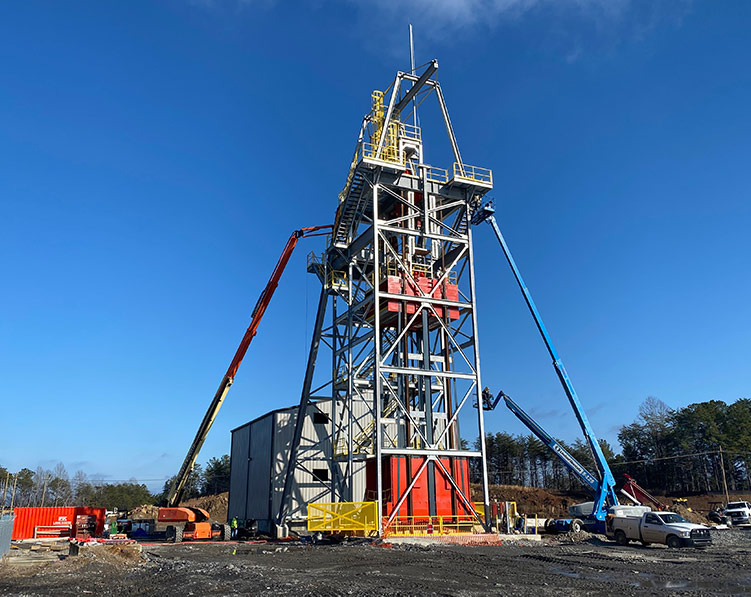

Shaft mining represents the most traditional and widely recognised form of underground mining in South Africa. This technique involves sinking vertical shafts from the surface to access deep mineral deposits, with horizontal tunnels extending from the shaft at various levels to reach the ore body. The shaft serves as the primary access route for personnel, equipment, and materials, whilst also providing ventilation and emergency egress.
South Africa's gold mining industry has perfected shaft mining over more than a century, with some shafts reaching extraordinary depths. The Tau Tona Mine, for instance, operates at depths exceeding 3,900 metres, requiring sophisticated engineering solutions to manage extreme temperatures, rock pressure, and logistical challenges. Modern shaft mining operations employ high-speed hoists capable of transporting personnel and materials at speeds exceeding 60 kilometres per hour, dramatically reducing travel times in these deep operations.
The construction of mining shafts requires meticulous planning and execution. Shaft sinking involves excavating through various geological formations, installing concrete linings for structural support, and incorporating multiple compartments for different purposes – personnel transport, material handling, ventilation, and emergency escape routes. Advanced shaft sinking techniques, including blind shaft sinking and raise boring, have improved efficiency and safety in shaft development projects across South African mines.
Slope Mining
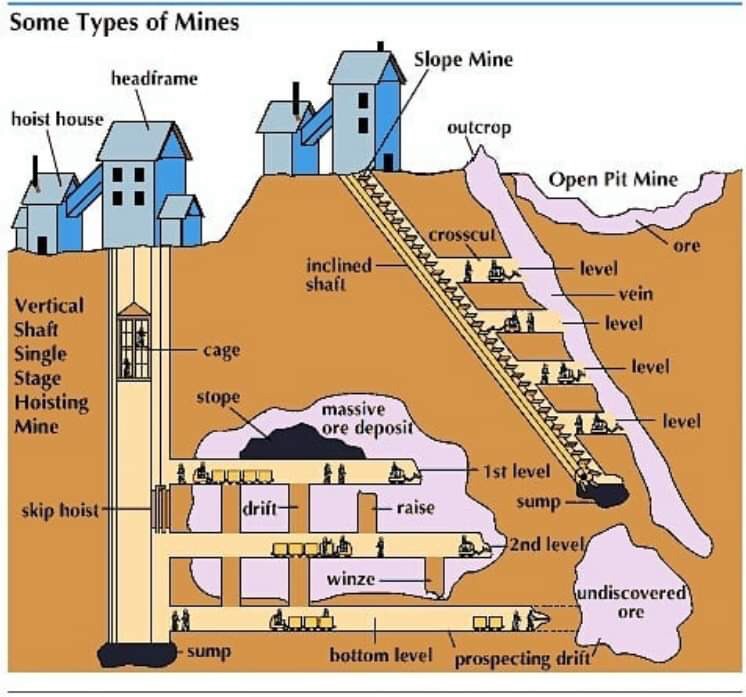

Slope mining, also known as drift mining or adit mining, involves accessing mineral deposits through inclined tunnels that follow the natural slope of the ore body or terrain. This method proves particularly effective for deposits located on hillsides or where the ore body dips at an angle that makes horizontal or inclined access practical. Slope mining offers several advantages over vertical shaft mining, including reduced hoisting costs, simplified material handling, and improved natural drainage.
In South Africa's coal mining regions, particularly in Mpumalanga and KwaZulu-Natal provinces, slope mining has been extensively employed to access coal seams that outcrop on hillsides. The technique allows for efficient extraction whilst maintaining good ground control and minimising surface subsidence. Recent developments in slope mining have incorporated mechanised equipment and continuous mining systems that significantly improve productivity and safety compared to traditional methods.
The design of slope mining operations requires careful consideration of gradient, ventilation requirements, and haulage systems. Optimal slope angles typically range between 8% and 12%, balancing accessibility with efficient material transport. Modern slope mining operations incorporate conveyor systems, trackless mobile equipment, and sophisticated ventilation networks to ensure safe and efficient operations.
Room and Pillar Mining
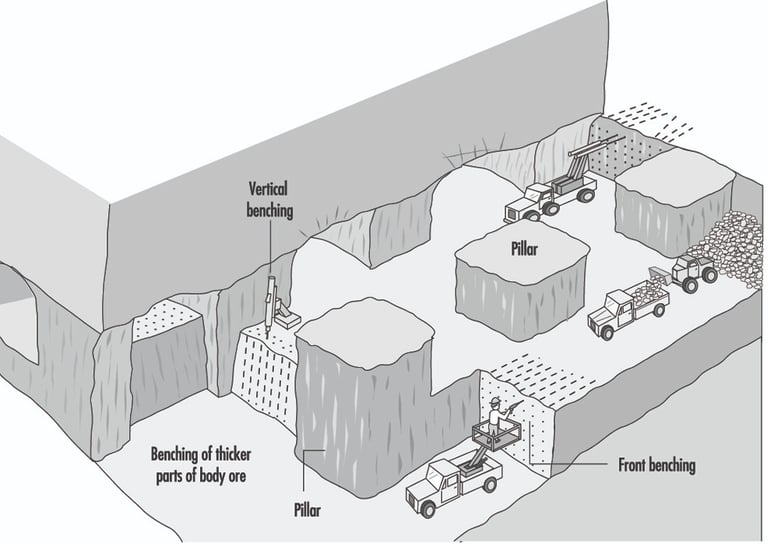

Room and pillar mining represents one of the most stable and widely used underground mining methods, particularly suitable for flat-lying or gently dipping ore bodies. This technique involves excavating large rooms or chambers whilst leaving regularly spaced pillars of unmined material to support the overlying rock mass. The pillars act as permanent support structures, preventing roof collapse and maintaining operational access throughout the mine life.
South Africa's platinum mining industry extensively employs room and pillar mining, particularly in the Bushveld Complex where the Merensky Reef and UG2 Reef are extracted using this method. Anglo American Platinum and Impala Platinum have refined room and pillar techniques to achieve high extraction ratios whilst maintaining excellent safety records. The method's flexibility allows for selective mining of high-grade areas whilst leaving lower-grade material in pillars for future extraction if economic conditions warrant.
The design of room and pillar layouts requires sophisticated geotechnical analysis to determine optimal pillar dimensions, room widths, and extraction sequences. Computer modelling and numerical analysis techniques help engineers optimise layouts for maximum ore recovery whilst ensuring long-term stability. Recent innovations include the use of artificial intelligence and machine learning algorithms to predict ground behaviour and optimise mining sequences in real-time.
Cut and Fill Mining
Cut and fill mining proves particularly effective for steep, narrow ore bodies where high extraction ratios are required and ground conditions necessitate continuous support. This method involves mining the ore in horizontal slices or "cuts," followed by backfilling the excavated space with waste rock, tailings, or cemented fill material. The backfill provides a working platform for the next mining level whilst supporting the surrounding rock mass.
South African gold mines have employed cut and fill mining extensively, particularly where ore bodies are too narrow or irregular for other methods. The technique allows for excellent ore recovery and provides good ground control, making it suitable for challenging geological conditions. Modern cut and fill operations incorporate mechanised equipment, including remote-controlled loaders and automated backfill systems, improving both productivity and safety.
The success of cut and fill mining depends heavily on the quality and placement of backfill material. Cemented backfill, created by mixing tailings with cement and water, provides excellent structural support and allows for higher extraction ratios. Paste backfill technology, which uses thickened tailings with minimal water content, has gained popularity due to its superior geotechnical properties and environmental benefits.
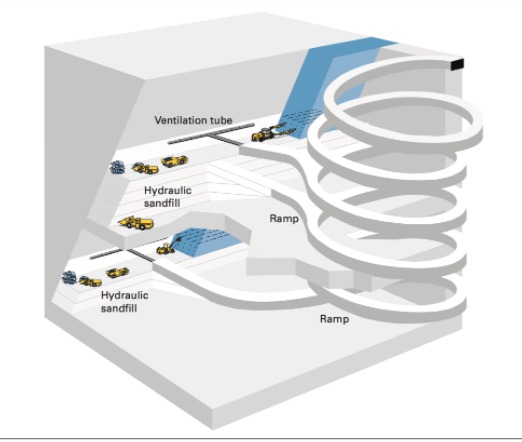

Block Caving
Block caving represents one of the most productive underground mining methods for large, low-grade ore bodies. This technique involves undermining a block of ore, causing it to fracture and collapse under its own weight. The broken ore is then extracted through drawpoints located beneath the caved material. Block caving requires minimal development compared to other underground methods and can achieve very high production rates once established.
Whilst block caving has not been extensively employed in South Africa compared to other regions, several operations have investigated its potential for large, low-grade deposits. The technique's applicability depends on specific geological conditions, including rock mass characteristics, ore body geometry, and structural geology. Recent technological advances, including automated drawpoint systems and advanced cave monitoring techniques, have improved the feasibility of block caving operations.
The implementation of block caving requires extensive geological and geotechnical studies to ensure successful cave initiation and propagation. Sophisticated numerical modelling techniques help predict cave behaviour and optimise extraction sequences. Ground support systems, including dynamic support capable of accommodating large deformations, are crucial for maintaining safe working conditions in block caving operations.
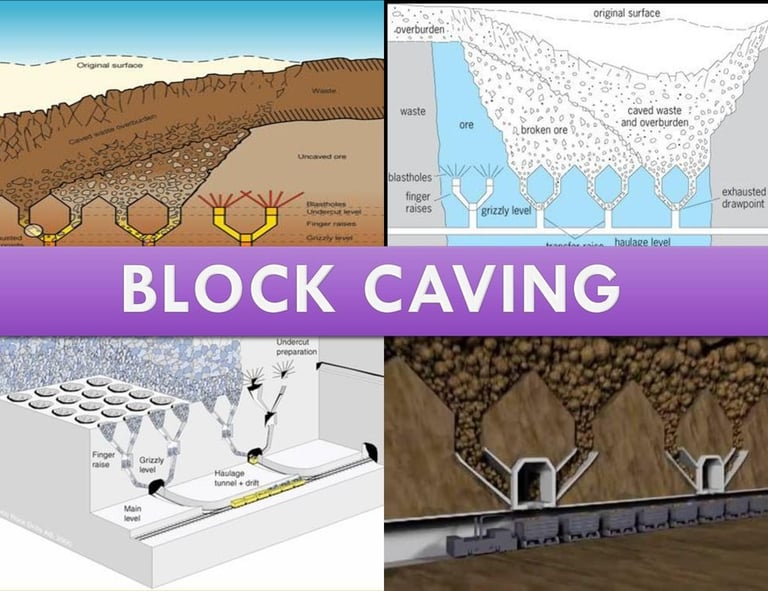

Key Equipment Used in Underground Mining
Underground mining operations rely on sophisticated equipment specifically designed for confined spaces and challenging operating conditions. The selection and deployment of appropriate equipment significantly impact productivity, safety, and operational efficiency. South African mining companies have been at the forefront of developing and implementing advanced underground mining equipment, often in collaboration with international manufacturers.
Drilling equipment forms the backbone of underground mining operations, used for development work, production drilling, and ground support installation. Modern underground drill rigs incorporate advanced guidance systems, automated drilling cycles, and real-time monitoring capabilities. Companies like Sandvik, Atlas Copco, and Epiroc have developed specialised underground drilling equipment that maximises productivity whilst minimising operator exposure to hazards.
Load-haul-dump (LHD) machines represent crucial equipment for material handling in underground operations. These versatile machines combine the functions of loading, hauling, and dumping broken ore or waste material. South African manufacturers, including Bell Equipment and Sandvik, have developed LHD machines specifically designed for local mining conditions, incorporating features such as enhanced operator protection, improved fuel efficiency, and reduced maintenance requirements.
Haulage systems in underground mines encompass various technologies, from traditional rail-based systems to modern conveyor networks and trackless haulage fleets. The choice of haulage system depends on factors such as production requirements, mine layout, operating costs, and flexibility requirements. Recent developments include autonomous haulage systems that reduce operator exposure to hazards whilst improving operational efficiency.
Ventilation equipment plays a critical role in maintaining safe and healthy working conditions underground. Primary ventilation systems, including main fans and airways, provide overall air circulation throughout the mine. Secondary ventilation systems, using auxiliary fans and ducting, ensure adequate air quality in working areas. Advanced ventilation control systems, incorporating real-time monitoring and automated adjustments, optimise air distribution whilst minimising energy consumption.
Ground support equipment has evolved significantly to address the unique challenges of underground mining. Modern support systems include rock bolts, mesh, shotcrete, and yielding supports designed to accommodate ground movement whilst maintaining safe working conditions. Innovative support technologies, such as dynamic bolts and energy-absorbing supports, have been developed specifically for deep mining conditions encountered in South African operations.
Challenges of Underground Mining
Safety Concerns
Underground mining presents inherent safety challenges that require continuous attention and sophisticated risk management strategies. The confined nature of underground workings, combined with geological uncertainties and operational complexities, creates numerous potential hazards that must be carefully managed. South African mining companies have invested heavily in safety technologies and protocols, driven by both regulatory requirements and moral obligations to protect workers.
Rockfall and ground instability represent primary safety concerns in underground mining operations. The removal of ore creates voids that can destabilise surrounding rock masses, potentially leading to dangerous ground conditions. South African mines have developed comprehensive ground control management systems, incorporating geological monitoring, support design protocols, and real-time hazard assessment techniques. The implementation of seismic monitoring systems has proven particularly effective in predicting and preventing rockburst incidents in deep mining operations.
Gas hazards pose significant risks in underground mining, particularly in coal mines where methane accumulation can create explosive conditions. Comprehensive gas monitoring systems, including continuous monitoring networks and personal gas detectors, provide early warning of dangerous gas concentrations. Ventilation management systems automatically adjust airflow patterns to maintain safe gas concentrations throughout underground workings.
Fire hazards in underground mines require specialised prevention and suppression systems. The confined nature of underground workings can rapidly spread fire and smoke, creating life-threatening conditions. Modern underground mines incorporate sophisticated fire detection and suppression systems, including water deluge systems, foam suppression, and inert gas systems. Emergency escape systems, including refuge chambers and self-rescue equipment, provide additional protection for underground workers.
Environmental Impact
Underground mining operations generate various environmental impacts that require careful management and mitigation strategies. Whilst generally less visible than surface mining impacts, underground operations can significantly affect groundwater systems, surface stability, and waste management requirements. South African mining companies have implemented comprehensive environmental management systems to address these challenges whilst maintaining operational viability.
Groundwater impacts represent a significant environmental concern for underground mining operations. Mining activities can alter natural groundwater flow patterns, potentially affecting water quality and availability for surrounding communities. Comprehensive hydrogeological studies and water management plans help minimise these impacts through careful mine planning and water treatment systems. The implementation of underground water treatment facilities has enabled many operations to achieve positive water balances whilst protecting local water resources.
Surface subsidence can occur when underground mining operations create voids that eventually collapse or compact over time. This phenomenon can damage surface infrastructure, affect agricultural land, and create safety hazards. Modern mining operations employ sophisticated subsidence prediction models and monitoring systems to minimise surface impacts. Backfilling technologies and controlled extraction techniques help reduce subsidence risks whilst maintaining operational efficiency.
Waste management in underground mining operations requires careful consideration of various waste streams, including waste rock, tailings, and process water. The underground placement of waste materials can provide beneficial uses, such as backfill for mined areas, whilst reducing surface environmental impacts. Paste backfill technology has gained popularity as it eliminates the need for surface tailings storage facilities whilst providing excellent ground support properties.
Costs
Underground mining operations typically require significantly higher capital and operating costs compared to surface mining methods. The complexity of underground infrastructure, specialised equipment requirements, and extensive safety systems contribute to elevated cost structures. South African mining companies have focused on cost optimisation strategies whilst maintaining safety and environmental standards.
Development costs represent a substantial portion of underground mining investments. Shaft sinking, decline development, and underground infrastructure require significant upfront capital investments before production can commence. The deep mining conditions prevalent in South African operations further increase development costs due to extreme temperatures, high rock stresses, and complex logistics requirements. Strategic development planning and phased implementation approaches help manage these costs whilst ensuring operational flexibility.
Operating costs in underground mining include higher labour costs per ton of ore produced, increased energy consumption for ventilation and materials handling, and elevated maintenance requirements for specialised equipment. The deep operating depths in South African mines create additional cost pressures through increased hoisting costs, enhanced ground support requirements, and sophisticated environmental control systems.
Risk management costs in underground mining encompass comprehensive insurance coverage, extensive safety training programs, and continuous monitoring systems. Whilst these costs are substantial, they are essential for maintaining operational licenses and protecting workforce safety. The long-term benefits of comprehensive risk management programs often outweigh the initial investment costs through reduced incident rates and improved operational continuity.
Benefits of Underground Mining
Access to Deeper Deposits
Underground mining techniques enable access to mineral deposits that would otherwise remain economically unviable through surface mining methods. As shallow deposits become depleted, the ability to extract minerals from greater depths becomes increasingly important for maintaining resource security and economic viability. South African mining operations have demonstrated exceptional capability in accessing deep mineral deposits, with several mines operating at depths exceeding 3,000 metres below surface.
The economic advantages of accessing deeper deposits often justify the higher operating costs associated with underground mining. Deep deposits frequently contain higher-grade ores or access to ore bodies with greater continuity and predictability. The Witwatersrand goldfields exemplify this principle, where underground mining has enabled extraction of gold from reefs that extend to depths of nearly 4,000 metres, maintaining South Africa's position as a major gold producer despite declining surface reserves.
Technological advances have continuously expanded the depth limits for economical underground mining. Improved ventilation systems, enhanced ground support technologies, and more efficient materials handling systems have enabled operations to reach previously inaccessible depths. The development of energy-efficient mining equipment and optimised mine planning techniques has further improved the economics of deep mining operations.
Resource extension through underground mining provides long-term sustainability for mining communities and regional economies. Many South African mining towns depend on continued mining operations for economic viability, and the ability to access deeper deposits through underground methods provides extended mine lives and sustained employment opportunities. This economic continuity supports local businesses, maintains tax revenues, and preserves specialised mining skills within communities.
Reduced Environmental Footprint
Underground mining operations typically create significantly smaller surface disturbances compared to equivalent surface mining operations. This reduced environmental footprint proves particularly valuable in areas where surface mining would conflict with other land uses, such as agricultural areas, urban developments, or environmentally sensitive regions. The minimal surface infrastructure required for underground operations allows for continued use of surface land for other purposes.
Biodiversity preservation benefits from underground mining's reduced surface impact. Unlike open-pit operations that remove entire ecosystems, underground mining allows surface vegetation and wildlife habitats to remain largely intact. This preservation of natural ecosystems provides important environmental and social benefits, particularly in regions where mining operations coexist with conservation areas or sensitive ecological zones.
Visual impact reduction represents another significant environmental advantage of underground mining. The absence of large open pits, waste rock dumps, and extensive surface infrastructure creates minimal visual disturbance to the landscape. This consideration proves particularly important for mining operations located near populated areas or tourist regions where visual impacts could affect local economies and community acceptance.
Water resource protection often benefits from underground mining approaches compared to surface mining alternatives. Underground operations typically require less water for dust suppression and ore processing, whilst the smaller surface footprint reduces the risk of contaminating surface water resources. Advanced water treatment technologies employed in underground operations often enable water recycling and reuse, further reducing environmental impacts.
Preservation of Surface Land
Underground mining enables mineral extraction whilst preserving surface land for alternative uses, creating multiple land-use opportunities that benefit local communities and regional economies. This preservation of surface land proves particularly valuable in densely populated areas or regions where surface land has high agricultural, residential, or recreational value. South African mining operations have successfully demonstrated the compatibility of underground mining with surface land preservation.
Agricultural compatibility represents a significant advantage of underground mining in many regions. Surface land above underground mining operations can continue to support farming activities, providing continued income for landowners and maintaining local food production. Careful mine planning and subsidence management ensure that agricultural activities can coexist with underground mining operations without significant disruption.
Urban development opportunities exist above underground mining operations, allowing for continued residential and commercial development whilst extracting valuable mineral resources. This dual land use provides economic benefits to communities whilst maintaining mineral resource access. Advanced mine planning techniques and comprehensive subsidence management ensure that surface developments remain safe and functional throughout the mining operation.
Recreational and conservation land uses can be maintained above underground mining operations, preserving important natural areas and recreational opportunities for local communities. This compatibility between mining and conservation proves particularly valuable in regions where mining operations coexist with national parks, game reserves, or recreational areas. The minimal surface disturbance associated with underground mining enables these multiple land uses to coexist successfully.
Future of Underground Mining
The future of underground mining in South Africa and globally will be shaped by technological innovations, changing economic conditions, and evolving environmental and social expectations. Emerging technologies promise to revolutionise underground mining operations through improved safety, enhanced productivity, and reduced environmental impacts. South African mining companies are actively investing in research and development to maintain their competitive position in the global mining industry.
Automation and robotics represent the most significant technological advancement in underground mining. Autonomous mining equipment, including self-driving haul trucks, automated drilling systems, and robotic maintenance equipment, promises to reduce operator exposure to hazards whilst improving operational efficiency. Several South African mining companies have initiated pilot programs for autonomous underground equipment, with promising results for both safety and productivity improvements.
Artificial intelligence and machine learning applications are transforming underground mining operations through predictive maintenance, optimised production scheduling, and enhanced safety monitoring. AI-powered systems can analyse vast amounts of operational data to identify patterns and predict equipment failures before they occur, reducing downtime and maintenance costs. Machine learning algorithms optimise mining sequences and equipment deployment to maximise productivity whilst minimising environmental impacts.
Digital twin technology enables mining companies to create virtual replicas of underground operations, allowing for sophisticated planning, training, and optimisation activities. These digital models incorporate real-time data from sensors throughout the mine, enabling operators to monitor and control operations remotely whilst predicting future performance under various scenarios. The implementation of digital twin technology has shown significant potential for improving safety and operational efficiency in underground mining operations.
Environmental sustainability technologies are becoming increasingly important for underground mining operations. Advanced water treatment systems, energy-efficient equipment, and waste minimisation techniques help reduce the environmental footprint of underground operations. The development of renewable energy systems for underground mining, including underground solar installations and geothermal energy recovery, promises to reduce the carbon footprint of mining operations.
Workforce development and training programs are evolving to address the changing skill requirements of modern underground mining operations. The integration of advanced technologies requires workers with different skill sets, including data analysis, equipment programming, and remote operation capabilities. South African mining companies are investing in comprehensive training programs to ensure their workforce can adapt to technological changes whilst maintaining the traditional mining skills that remain essential for underground operations.
Conclusion
Underground mining techniques represent a sophisticated and essential component of South Africa's mining industry, enabling access to valuable mineral resources whilst minimising environmental impacts and preserving surface land uses. From the traditional shaft mining methods that built the foundation of South Africa's mining industry to cutting-edge automation and artificial intelligence applications, underground mining continues to evolve to meet changing economic, environmental, and social requirements.
The various underground mining techniques discussed – shaft mining, slope mining, room and pillar mining, cut and fill mining, and block caving – each offer unique advantages for different geological conditions and operational requirements. The selection of appropriate mining methods depends on numerous factors, including ore body characteristics, geological conditions, economic considerations, and environmental constraints. South African mining companies have demonstrated exceptional expertise in adapting these techniques to local conditions whilst maintaining world-class safety and environmental standards.
The challenges associated with underground mining – safety concerns, environmental impacts, and elevated costs – require continuous attention and sophisticated management strategies. However, the benefits of underground mining, including access to deeper deposits, reduced environmental footprint, and preservation of surface land, often justify these challenges and position underground mining as an essential component of sustainable mineral resource development.
Looking toward the future, technological innovations promise to address many of the current challenges associated with underground mining whilst improving safety, productivity, and environmental performance. The integration of automation, artificial intelligence, and digital technologies will transform underground mining operations, creating new opportunities for efficiency improvements and risk reduction. South African mining companies are well-positioned to lead these technological developments, building on their extensive experience in underground mining operations.
The continued success of underground mining in South Africa depends on maintaining the delicate balance between economic viability, environmental responsibility, and social acceptability. Through continued investment in technology, workforce development, and environmental stewardship, underground mining operations can continue to contribute significantly to South Africa's economy whilst meeting the evolving expectations of stakeholders and communities. The future of underground mining in South Africa appears bright, with numerous opportunities for continued innovation and improvement that will benefit the industry, communities, and the nation as a whole.

Email Address: Li.wang@feichuncables.com
© 2025. All rights reserved.


One-click to Quickly Contact
Products
Offshore & Marine Cable
XLPE Cable
Contact
Company
Location:
Building A Private Science and Technology Park, Hefei Economic and Technological Development Zone, Anhui Province, China
